Changing your energy supplier is a simple and effective way to reduce monthly utility bills without sacrificing reliability.
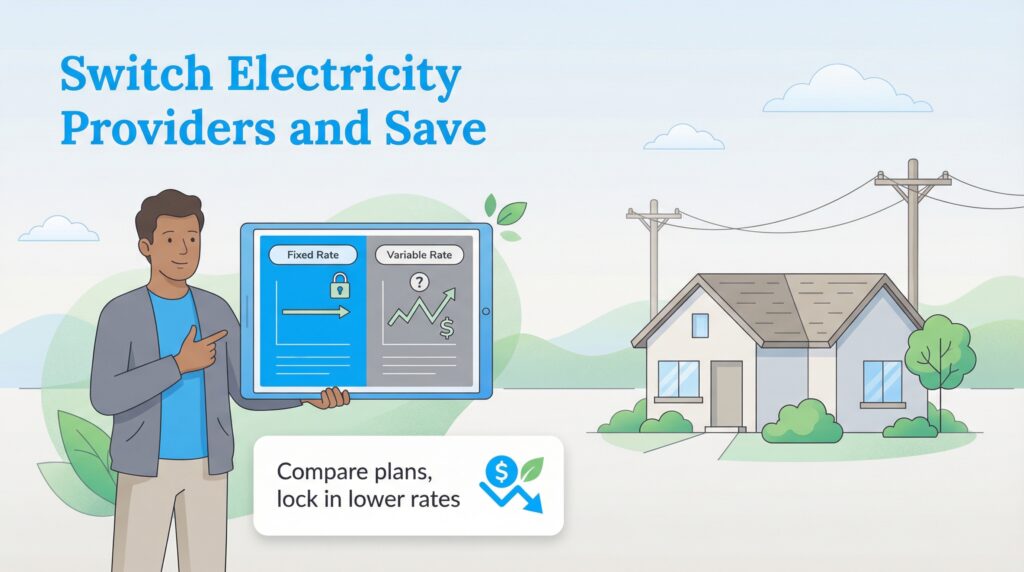
Key Takeaways
- Switching providers does not affect reliability because your local utility company continues to deliver the power and maintain the lines.
- Review your current contract’s terms before making a move to avoid unexpected early termination fees or billing overlap.
- Comparing fixed versus variable rates is the most critical step in securing long-term savings and stability for your household budget.
If you live in a deregulated energy market, you have the power to choose who supplies your electricity, or natural gas, yet many homeowners stick with their default provider out of habit or fear of the unknown. Switching electricity providers is often the fastest way to lower your monthly utility costs, access renewable energy options, and lock in a more stable rate for your home. While the process might sound technical, it is actually quite straightforward once you understand a few key terms and know what to look for in a contract. By taking control of your energy choice, you can stop overpaying for the exact same electricity you are already using.
Can You Switch? Understanding Energy Deregulation
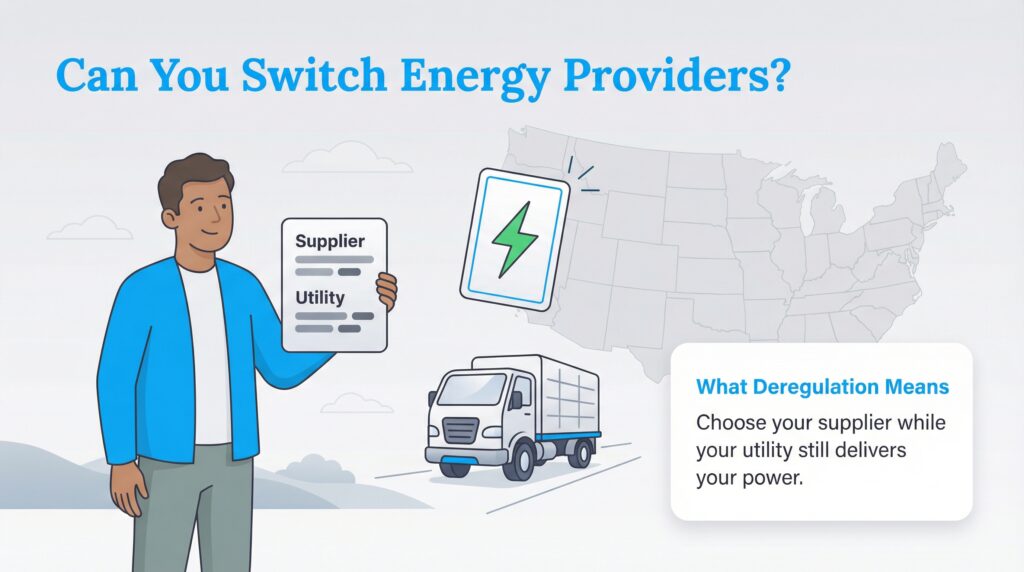
Before you start comparing rates, it is important to confirm that you live in an area where energy choice is available. Energy deregulation separates the company that generates the electricity (the supplier) from the company that delivers it to your home (the utility), allowing you to shop around for the generation portion of your bill. Think of it like buying milk at the grocery store: you can choose which brand of milk to buy, but the same delivery truck brings it to the store regardless of which brand you pick. Currently, several states — including parts of Texas, Pennsylvania, Ohio, Illinois, and New York — offer some form of electricity choice for residential customers. Availability often depends on your specific utility service area. If you aren’t sure about your status, you can quickly check your eligibility by visiting the U.S. Energy Information Administration (EIA) page regarding restructuring to see if your state participates.
Why Switch? Benefits Beyond Just Cheaper Rates
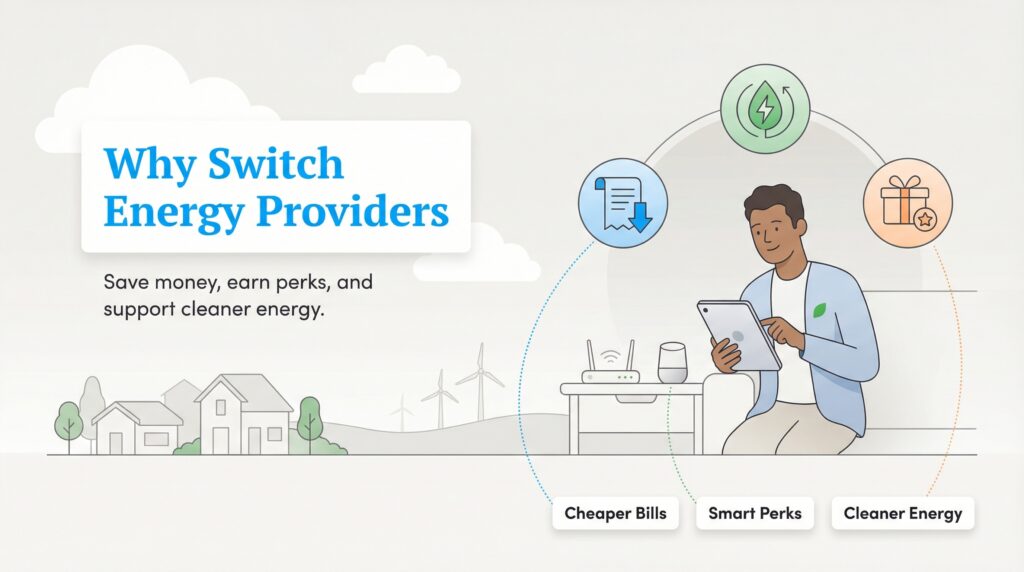
While securing a lower monthly bill is the primary motivator for most people, switching providers opens the door to other significant benefits tailored to your lifestyle. Many suppliers compete for your business by offering specialized perks that standard utilities do not provide, such as smart home bundles or loyalty rewards. Additionally, this is the best opportunity for eco-conscious households to transition to cleaner power sources without installing solar panels. You can specifically look for plans that source power from wind or solar farms, allowing you to support the grid’s transition to renewables directly through your monthly bill.
Essential Terminology: Reading Your Electricity Facts Label
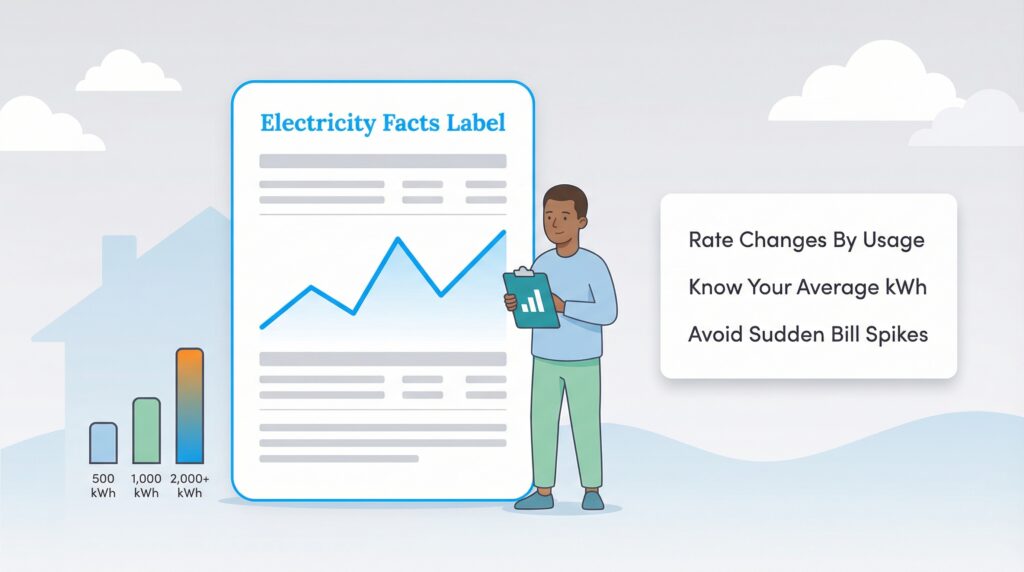
To make an apples-to-apples comparison, you need to look beyond the advertised marketing rate and examine the “Electricity Facts Label” (EFL) or plan summary. This document breaks down exactly what you will pay per kilowatt-hour (kWh) based on your usage, which often fluctuates depending on the season. Providers may advertise a low rate that only applies if you use a specific amount of power, so understanding your own average usage is key to finding a real deal. Be wary of tiered rates where the price per kWh jumps significantly if you use less than 1,000 kWh or more than 2,000 kWh. Mastering these details is a crucial part of lowering your daily usage costs and avoiding bill shock.
How to Switch Electric Companies in 5 Easy Steps
Switching providers is a digital process that rarely requires a phone call or a technician visit. Follow these steps to ensure a seamless transition from your old supplier to your new one.
1. Check Your Current Contract
Review your existing electricity bill or log in to your current provider’s portal to see when your contract expires. If you are in the middle of a fixed-term contract, you may be subject to an Early Termination Fee (ETF) for leaving before the end date. It is always cheaper to wait until your contract is up than to pay a hefty penalty fee just to switch a few months early.
2. Gather Your Usage History
Look at your last 3 to 12 months of electricity bills to find your average monthly usage in kWh. Knowing whether you average 500, 1000, or 2000 kWh a month is vital because rates often change based on usage tiers. If you choose a plan designed for high usage but you live in a small apartment, you could end up paying a much higher rate per kWh than you expected.
3. Compare Electricity Rates and Plans
Use a trusted comparison tool or your state’s official shopping website to view available plans in your ZIP code. Most tools start by asking for your ZIP code so they can show plans that are actually available on your local utility’s wires. Filter your results by contract length and rate type to narrow down the best options for your specific needs. Official state sites like PowerToChoose.org in Texas or PAPowerSwitch in Pennsylvania allow you to filter out gimmicky plans and focus on straight rates.
4. Vetting the Provider
Before you click “sign up,” take a moment to research the provider’s reputation for customer service and billing transparency. A slightly cheaper rate might not be worth the headache if the company has a history of poor support or hidden fees. Check reviews to see how they handle billing disputes or renewal notices.
5. Confirming the Switch
Once you select a plan, you will fill out a simple enrollment form online; the new provider will handle the communication with your local utility to switch the service. You generally do not need to contact your old provider to cancel, as the new enrollment automatically triggers the changeover.
Fixed vs. Variable Rates: Which Plan Is Right for You?
One of the biggest decisions you will face is choosing between a fixed-rate plan and a variable-rate plan. A fixed-rate plan locks in your price per kWh for the duration of your contract, usually 6 to 24 months, protecting you from price spikes during extreme weather or market volatility. In contrast, a variable-rate plan fluctuates month-to-month based on the wholesale cost of electricity, which can offer savings when prices drop but carries the risk of significantly higher bills during peak demand seasons. Some variable plans advertise very low introductory rates that can reset to much higher prices after just a few billing cycles, so be sure to read how and when your rate can change. For consistent budgeting and peace of mind, we generally recommend fixed-rate plans so you know exactly what to expect on your bill every month.
Common Myths About Switching Energy Providers
Fear of power outages or service interruptions keeps many people from switching, but these fears are largely unfounded in a deregulated market. Because the local utility company—not the supplier—owns and maintains the power lines, your physical service remains exactly the same regardless of who sends you the bill. When you switch, you’re only changing the company that supplies your electricity on your bill — not the local utility that owns the poles, wires, and meters. If a storm knocks out a transformer in your neighborhood, you still call the local utility company to fix it, just like your neighbors do. Switching is purely a financial transaction, not a physical change to your home’s wiring. For more information on how the grid works, visit our electricity hub.
Take Charge of Your Energy Bill Today
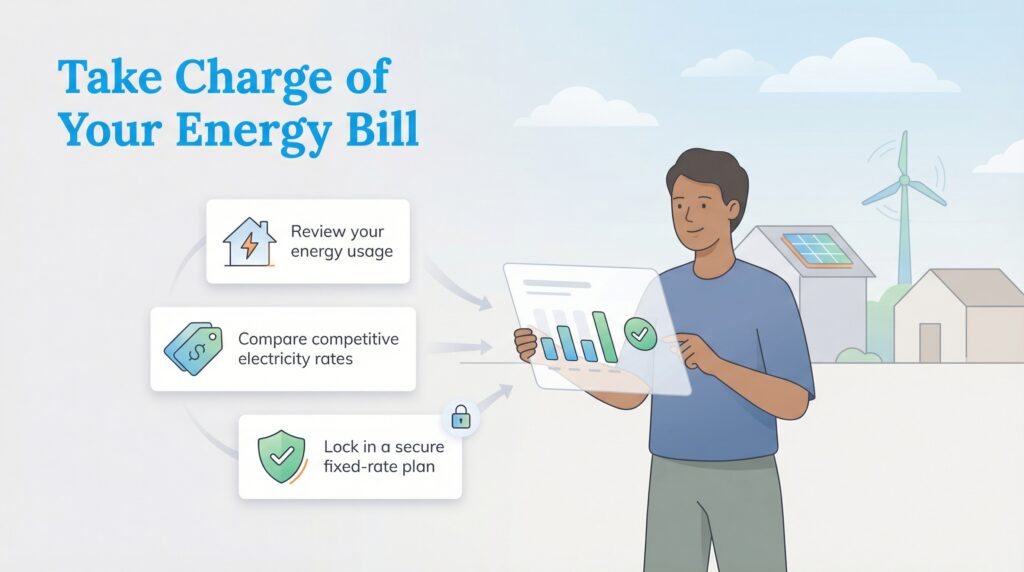
Switching electricity providers is one of the most practical ways to manage your household budget and support renewable energy growth. By taking a few minutes to review your current usage, compare competitive rates, and lock in a secure fixed-rate plan, you can enjoy peace of mind knowing you aren’t overpaying for power. Don’t let the fear of paperwork hold you back; the process is digital, seamless, and designed to put the control back in your hands.
Frequently Asked Questions About Switching Electricity Providers
Will I lose power when I switch electricity providers?
Does switching providers cost money?
How long does it take to switch electric companies?
Can I switch back if I don’t like my new provider?
Can I switch to a 100% renewable electricity plan without installing solar panels?
What happens if my electricity provider goes out of business?
About the Author
Claudio is a sustainability-focused writer with a background in Anthropology and Psychology from NC State University. He has spent over 15 years working in writing, interpretation, and translation, driven by a deep interest in how human culture shapes the environment. Today, he shares his curiosity with readers by writing about sustainable living solutions and the connection between everyday choices and environmental impact.
